SMITHSONIAN LIBRARIES AND ARCHIVES
The Long Life of a Dead Rhinoceros
How did one exaggerated armored rhino influence European illustration for centuries? Trace the artistic origins from Albrecht Dürer to Conrad Gessner and beyond, with images from Smithsonian Libraries and Archives.
/https://tf-cmsv2-smithsonianmag-media.s3.amazonaws.com/filer_public/36/da/36da0515-7647-424f-a2e3-e71763e5c305/sil-76-14437.jpeg)
Try to imagine what a rhinoceros looks like. Regardless of whether or not you’ve ever personally seen one, you’ve likely seen enough photographs or television shows to know what a rhinoceros looks like. You’re probably picturing a large four-legged animal with gray, tough skin, and a prominent horn on its snout.
Something that looks like this:

Now, imagine that you’ve never seen a rhinoceros, and I tried to describe to you what a rhinoceros looks like. Based on my description, how accurate do you think the image of the rhinoceros in your head would be? If I asked you to draw what you’re imagining, what would it look like? And what if we sent that drawing to a bunch of other people who have never seen a rhinoceros?
This is precisely what happened when the artist and engraver Albrecht Dürer drew what he imagined a rhinoceros to look like when he first read a description in 1515. In the early 16th century, as Europeans had started to explore the world beyond the Mediterranean Sea, they came in contact with a great many creatures that few, if any, Europeans had ever heard of. Manuel I, the King of Portugal, had recently established Portugal’s first colony in India and offered an Indian rhinoceros to Pope Leo X as a gift. This is the rhinoceros that captured Dürer’s imagination. Unfortunately, the rhinoceros died on its way to Rome, so little remains of the actual animal except for the brief description and sketch that Dürer used to create his famous woodcut.
Take a look at Dürer’s rendition of the rhinoceros:
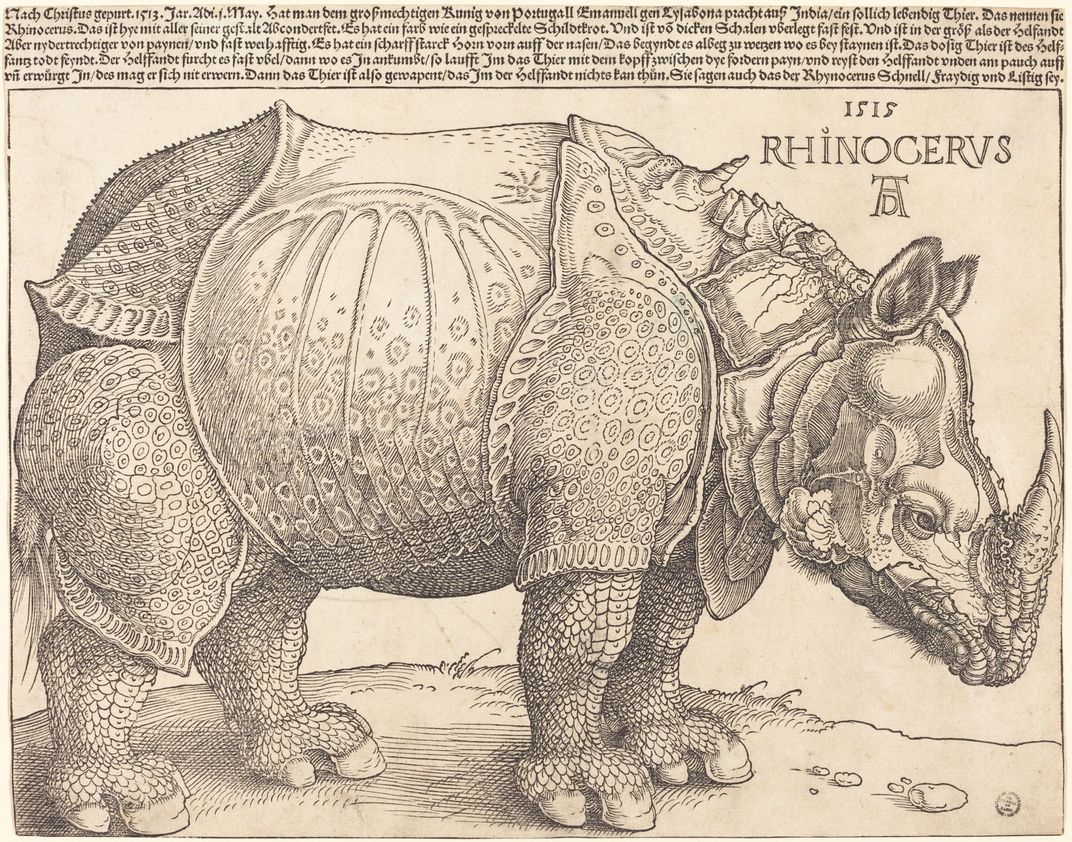
Close observers will notice that Dürer’s rhinoceros broadly resembles what an actual rhinoceros looks like. Notice, however, that Dürer took a number of liberties with his rendition. The skin of the rhinoceros looks like European plate armor; while rhino skin may be described as “scaly,” it’s not actually made of scales like the legs depicted here; and there is an extra small horn on the rhino’s back along with a saw-toothed ridge on the rhino’s hindquarters.
If Dürer had been a nobody, the story might have ended there. However, Dürer was a very well-known artist, having been under the patronage of the Holy Roman Emperor Maximilian I. As a consequence, Dürer’s rhinoceros became the most recognizable image of a rhinoceros in Europe for almost three hundred years!
Dürer’s rhino was so influential that early scientific texts took it as understood that Dürer was correct in his depiction of the animal. Consequently, whenever an illustration of a rhino was needed, publishers either copied, imitated, or reprinted Dürer’s famous image. For example, the Swiss doctor Conrad Gessner published his Historia animalium in 1551, the first-ever zoological inventory that attempted to catalog all known animals. In it we find the following illustration of a rhinoceros:
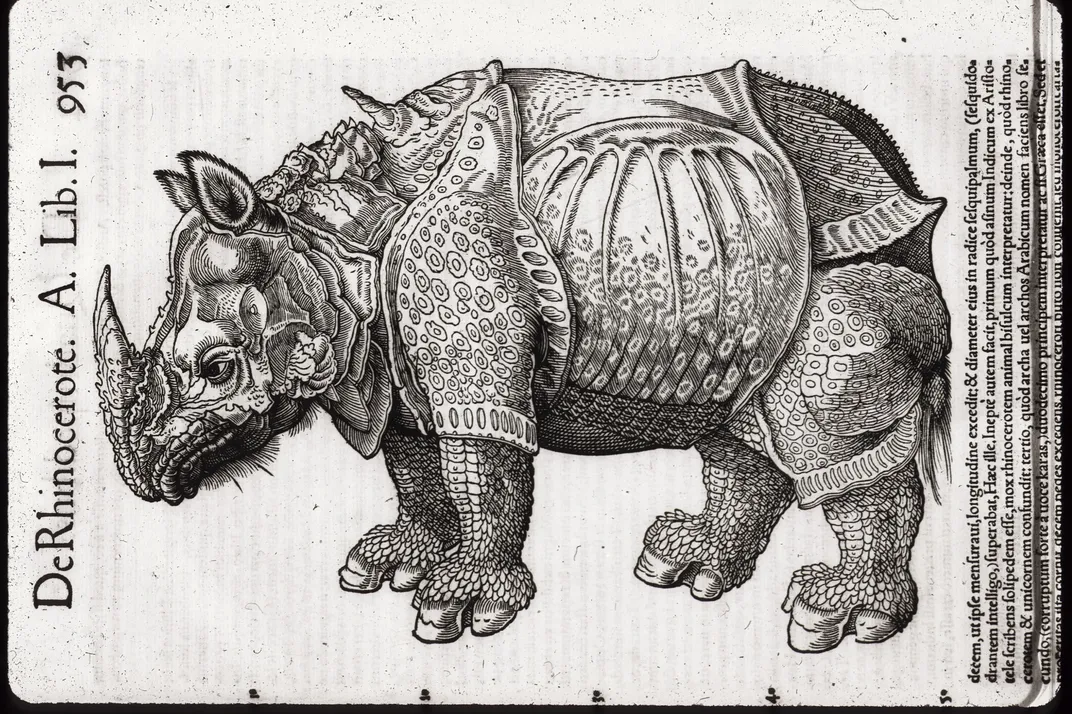
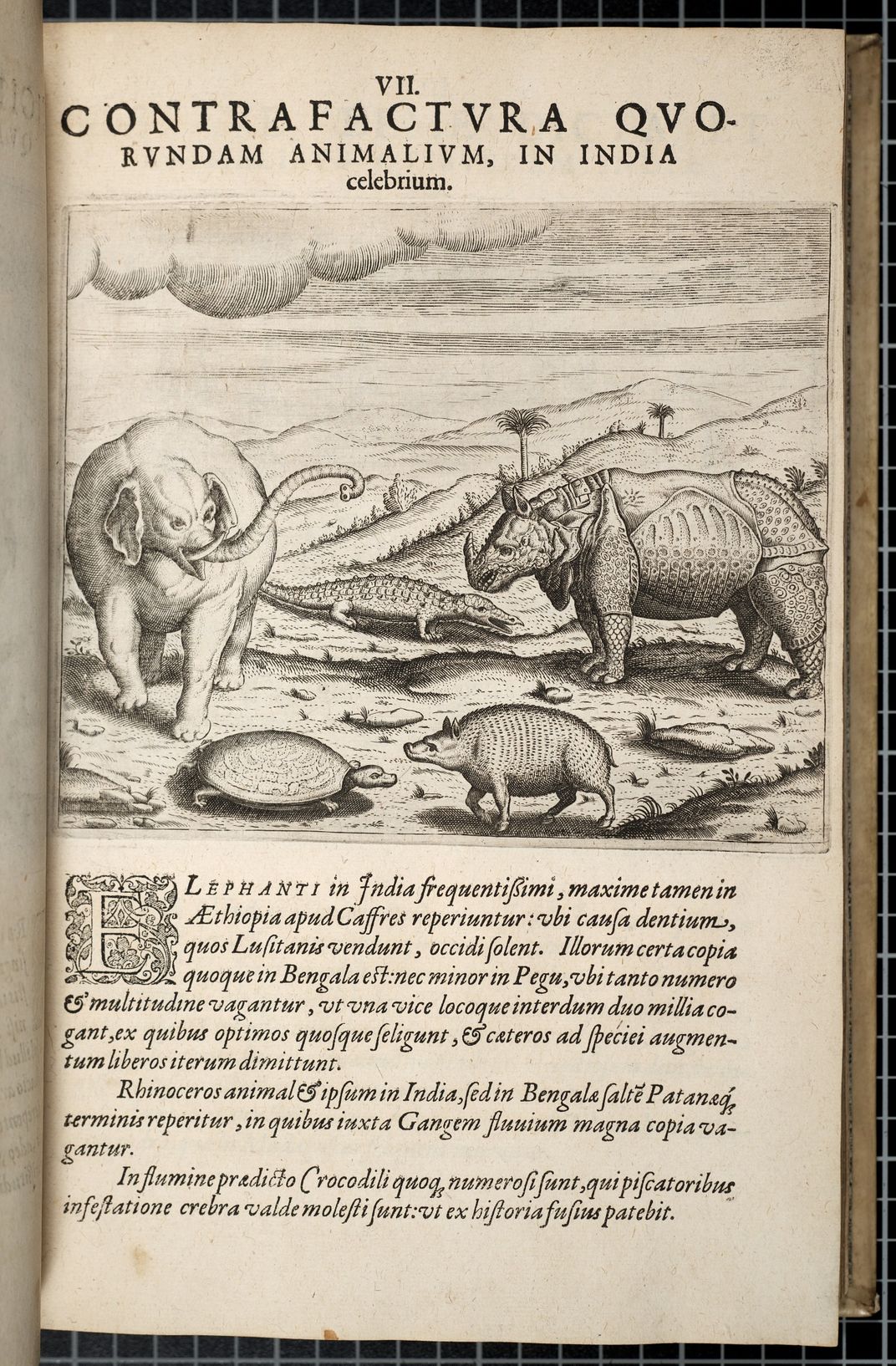
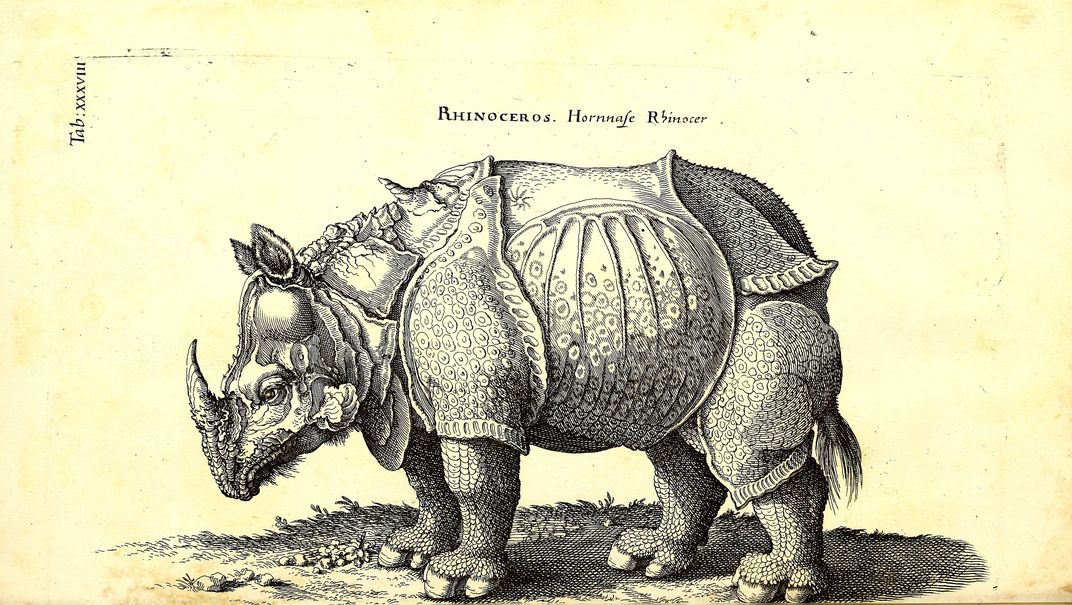
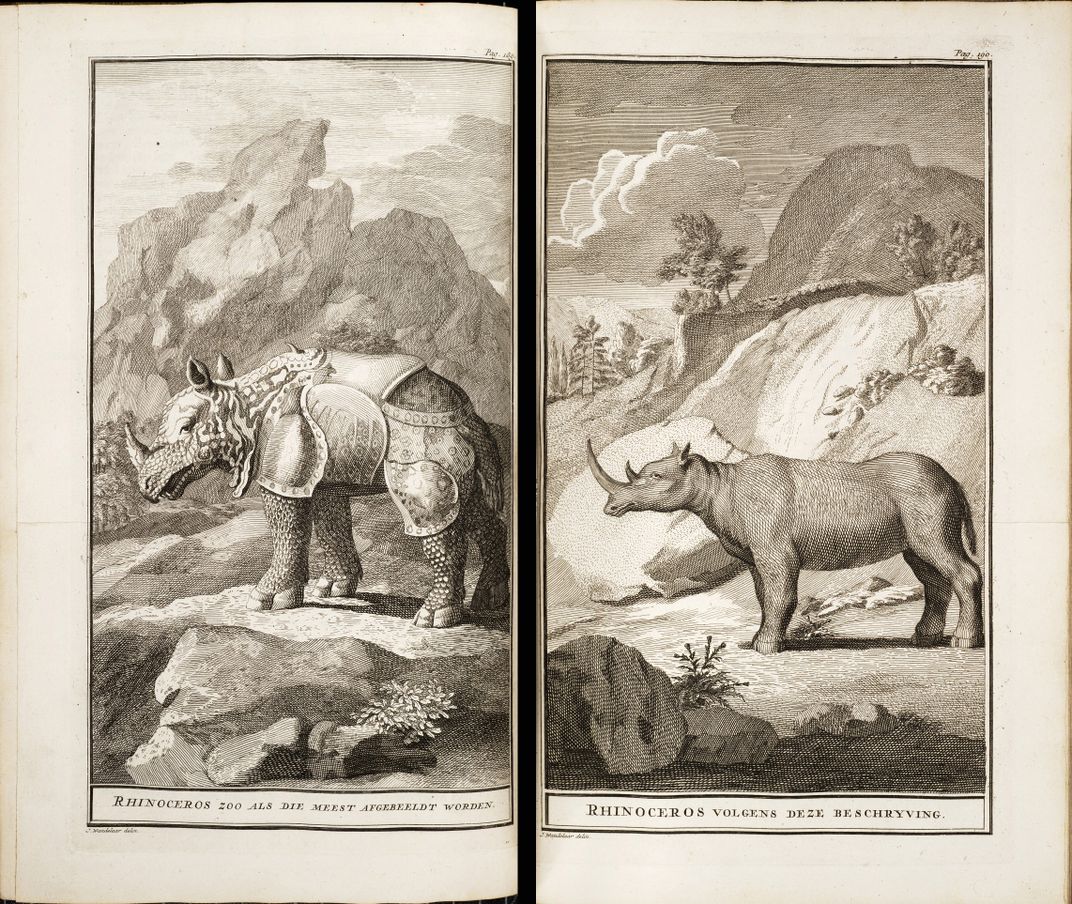
Today, Dürer’s rhinoceros is more of an intellectual curiosity than it is considered an accurate depiction of a rhinoceros. Still, it continues to have an influence on the arts and has left an indelible mark on our culture – artists from Salvador Dalí to author Umberto Eco have used Dürer’s rhinoceros as an inspiration for their artworks and ideas. It just goes to show that misinformation can have an extremely long life – much like a rhinoceros that died over 500 years ago.
Related Resources:
Smithsonian Libraries and Archives Information Literacy Collections on Learning Lab: https://learninglab.si.edu/org/librariesarchives?
Truitt, James, “Monoceros: What Conrad Gessner’s discussion of the unicorn tells us about natural history in Renaissance Europe” (2017).
Zoology images in Smithsonian Libraries and Archives Image Gallery
